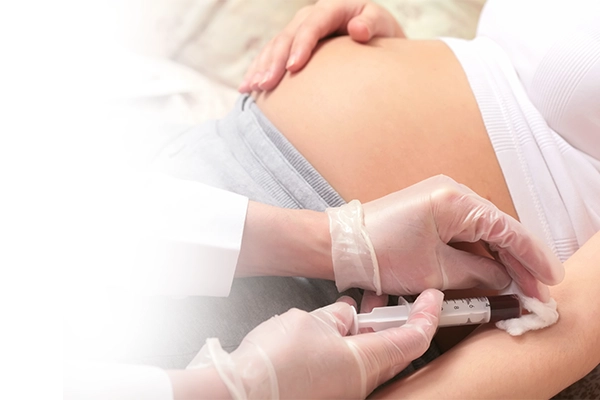According to the organizational standard for perinatal care, every pregnant woman should have a regular blood count. With frequent check-ups, the gynecologist can react in time in case of any deviations from the norm.
Morphology in pregnancy-norms
Among the parameters included in the blood count are the number of white and red blood cells, platelets, the average blood cell volume or the average concentration of hemoglobin in a blood cell. During pregnancy, the woman’s body undergoes many changes that adapt the body of the mother-to-be to ensure the best possible development of the baby during these nine months. The volume of circulating blood increases, which leads to a decrease in the hematocrit value. This condition is referred to as physiological anemia of pregnancy, which is accompanied by an average hemoglobin of approx: 12.5 g/dl. Lower values than 11 g/dl have a different cause and are most often associated with iron deficiency and require appropriate treatment. During pregnancy, the number of erythrocytes in the blood increases, and the number of platelets decreases. Because of the physiological changes in the blood count of pregnant women, the results should always be evaluated by a gynecologist.
Morphology in pregnancy-when?
Every pregnant woman should have her blood count checked at least 5 times during pregnancy. The gynecologist first orders it during a pregnant woman’s first visit, usually before the 10th. week. Subsequent blood count tests according to the Ministry of Health regulation should be performed:
- between 15. a 20. week
- between 27. a 32. week
- between 33. a 37. week
- between 38. and 39th week
Often doctors order a blood count test at every visit during pregnancy so that they have up-to-date results and if there are any abnormalities, they can react and introduce treatment, such as ordering iron for anemia or administering antibiotic therapy if there are signs of infection and a high leukocyte count.
Morphology in pregnancy- how to prepare?
For a blood test, a pregnant woman reports to the chosen collection point or clinic. In many such places, blood can only be drawn in the morning. The CBC itself does not have to be done on an empty stomach, but sometimes the blood glucose (blood sugar level), for example, is also tested along with it, before which nothing must be eaten, so it is best if a woman comes to the clinic before breakfast and is fasting. It is also a good idea to contact the selected point and make sure how to prepare for a particular test.
Morphology in pregnancy-anemia
Anemia in pregnancy is diagnosed when the hemoglobin concentration is below 11g/dl. The most common cause of anemia during pregnancy is iron deficiency. During pregnancy, the demand for this element increases, hence the risk of anemia increases. According to current PTGiP recommendations, iron supplementation during pregnancy should be taken by women who have been diagnosed with anemia or who have low blood ferritin levels, rather than every pregnant woman, as was the case years ago.
Morphology in pregnancy-thrombocytopenia
If the platelet count is too low, the so-called “low platelet count” should always be ruled out. Pseudo thrombocytopenia, resulting from platelet agglutination. Therefore, in the case of a low platelet count, blood is drawn again, this time into a tube containing heparin or sodium citrate (rather than EDTA, as usual). If putative thrombocytopenia is ruled out, the most common causes of excessively low platelet counts are maternal th rombocytopenia and primary immune thrombocytopenia.
Performing a blood count at the end of pregnancy is essential if a woman plans to give birth with anesthesia or is to have a planned C-section. The morphology result is needed by doctors to check for contraindications to subarachnoid or epidural anesthesia. Indeed, platelets of less than 100,000/mm3are a contraindication for central blockade.
Morphology in pregnancy-elevated leukocytes
Elevated leukocyte count (leukocytosis) occurs in the course of ongoing inflammation, among other things. Intrauterine infection. However, it should be remembered that pregnancy itself predisposes to elevated leukocytes, so there is no reason to worry if their value is slightly higher than the norm, which is 10-15 thousand/ul in pregnancy. If leukocytes are very elevated, it is necessary to perform additional tests, such as a general urine test. Often leukocytosis is accompanied by symptoms of infection in a woman, such as fever.
Read also:
Leukocytes in urine during pregnancy
Rate this article:











